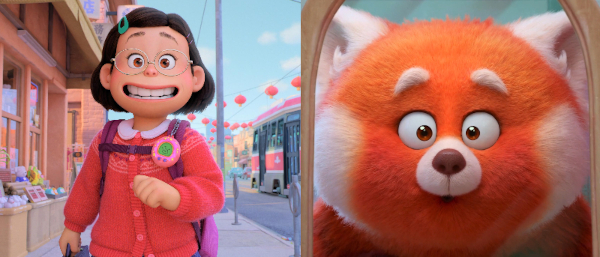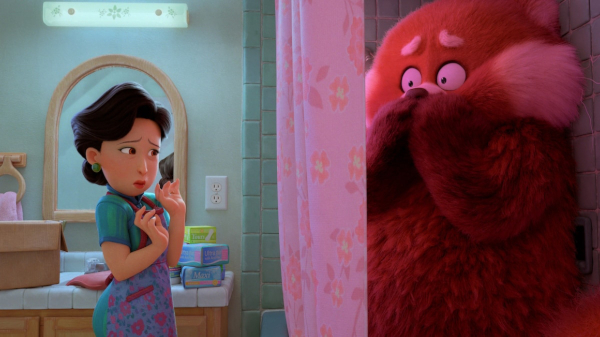We all have an inner beast—one that we hide away from plain sight, often because of the shame and embarrassment that comes when it’s unleashed. Through time, we learn how to accept and live with that inner beast. But Disney and Pixar’s new film “Turning Red” reminds us one another important thing we tend to forget: that other people have their inner beasts too, and we need to love and accept that about them as well.
“Turning Red” (directed by Domee Shi) follows the story of a 13-year-old Chinese-Canadian girl named Mei on the cusp of adolescence who now finds herself torn between staying her mom’s perfect and obedient daughter and actually enjoying her youth, hanging out with friends, crushing on boys, and listening to the music of a boy band she likes. After an embarrassing encounter, Mei transforms into a giant red panda and discovers that it is a curse brought down by her ancestor to every woman in her family. Furthermore, her transformations are triggered by intense emotions, whether positive or negative. Her mother, Ming, then decides to have Mei undergo a ritual that will seal away the spirit of the red panda, just as she and Mei’s grandmother and aunties did, which can only take place on the Red Moon. But in the days leading up to it, Mei slowly learns with the help of her best friends that having the power to become a red panda may not be so bad after all.
At first glance, “Turning Red” seems like a movie preaching the same lessons we’ve been taught before: self-acceptance and being unafraid to be who you are. And it is; Mei soon understands that her inner beast isn’t something to be feared as her friends help her tame it and manifest it in a more positive way. But there is a deeper message that the film tries to get across, and that is to look outside of yourself and see that others may be harboring a similar secret that you need to help them through too.
We eventually find in “Turning Red” that Mei’s female relatives have all endured transforming into a red panda before successfully sealing them away. Mei’s mother is no exception, but is notably the one who had the worst experience among them all. Ming blames the red panda for her strained relations with her own mother and, in her desire to avoid the same thing from happening between her and Mei, she becomes overprotective and resistant to Mei’s cultural assimilation which could drive them apart. This becomes a source of conflict for Mei who just wants to keep the one thing that Ming is trying desperately to be taken out. In a sense, this is Ming’s own inner beast—her wish for her daughter not to have one.
In the end, Mei realizes that her red panda journey doesn’t stop at embracing her authenticity; she needs to help her mom love her own ugly parts too and, in that way, gently push her towards the right direction of accepting Mei’s changes, growth, and independence. After all, as Mei’s father tells her, “The point is not to push the bad stuff away. It’s to live with it.” That applies not just with yourself but with your loved ones too.
“Turning Red” is a great movie to watch with your family, your parents, and your children in the hopes of reminding yourselves to never deny the parts that make you who you are and to welcome with open arms the parts that make up those you love—flaws, red bushy tails, and all.
“Turning Red” premieres in Philippine cinemas on March 10, 2022.
(ALSO READ: “Sorry, strict ‘yung parents ko”: 10 Things Only Children with Strict Parents Can Relate To)
Do you have a story for the WhenInManila.com Team? Email us at story.wheninmanila@gmail.com or send us a direct message at WhenInManila.com Facebook Page. Interact with the team and join the WhenInManila.com Community at WIM Squad! Get the latest news about the Philippine Entertainment industry and join the WIM Showbiz Facebook group! We also share our stories on Viber, join us!






